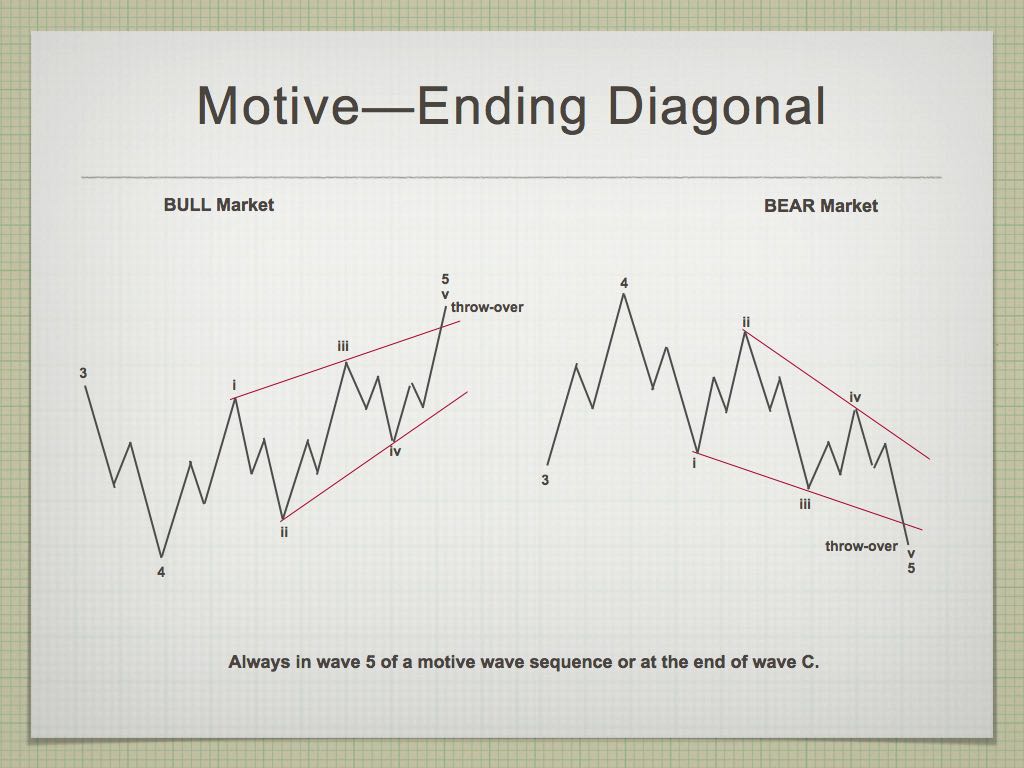
Ending diagonals are very difficult waves to identify (and trade) in their early stages. They are ending waves of either a motive fifth wave, or a countertrend C wave. All the waves are in threes and after the throw-over (a final extension beyond the trendline), they reverse dramatically in the other direction and revert quickly back to the start of the pattern.
Rules (these are “hard” rules; they cannot be broken)
- A diagonal triangle always subdivides into five waves.
- An ending diagonal always appears as wave 5 of an impulse or wave C of a zigzag or flat.
- Waves 1, 2,3, 4 and 5 of an ending diagonal. and waves 2 and 4 of a leading diagonal always subdivide into zigzags.
- Wave 2 never goes beyond the start of wave 1.
- Wave 3 always goes beyond the end of wave 1.
- Wave 4 never moves beyond the start of wave 3.
- Wave 4 always ends within the price territory of wave 1.
- Going forward in time, a line connecting the ends of waves 2 and 4 converges towards (in the contracting variety) or diverges from (in the expanding variety) a line connecting the ends of waves 1 and 3.
- In a leading diagonal, wave 5 always ends beyond the end of wave 3.
- In the contracting variety, wave 3 is always shorter than wave 1, wave 4 is always shorter than wave 2, and wave 5 is always shorter than wave 3.
- In the expanding variety, wave 3 is always longer than wave 1, wave 4 is always longer than wave 2, and wave 5 is always longer than wave 3.
- In the expanding variety, wave 5 always ends beyond the end of wave 3.
Guidelines (guidelines can be broken but it’s rare that they are)
- Waves 2 and 4 each usually retrace .66 to .81 of the preceding wave.
- Waves 1, 3, and 5 of a leading diagonal usually subdivide into zigzags but sometimes appear to be impulses.
- Within an impulse, if wave 1 is a diagonal triangle, wave 3 is likely to be extended.
- Within an impulse, wave 5 is unlikely to be a diagonal triangle if wave 3 is not extended.
- In the contracting variety, wave 5 usually ends beyond the end of wave 3. (Failure to do so is called a truncation.) [I don’t believe there is such a thing as truncation – Ed]
- In the contracting variety, wave 5 usually ends at or slightly beyond a line that connects the ends of waves 1 and 3. (Ending beyond that line is called a throw-over.)
- In the expanding variety, wave 5 usually ends slightly before reaching a line that connects the ends of waves 1 and 3.



